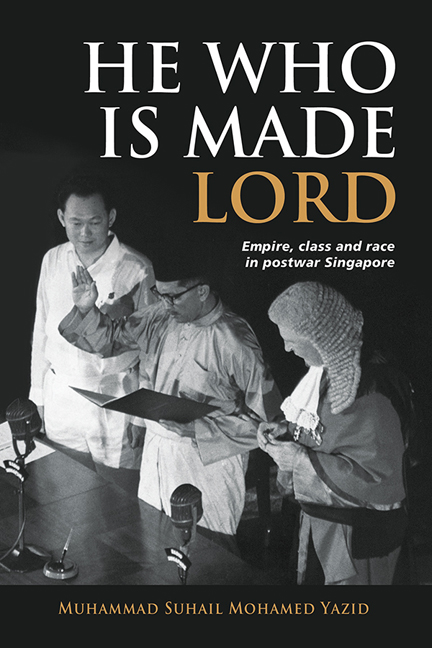Book contents
4 - Commoner, or Privileged Elite?
Published online by Cambridge University Press: 01 March 2024
Summary
High Births and Hierarchies
The PAP government touted the Yang di-Pertuan Negara as an egalitarian symbol in spite of the pseudo-royal persona which had become inextricable in the performance of his duties. Returning to Yusof's swearing-in ceremony on 3 December 1959, Prime Minister Lee conveyed to the people of Singapore:
From tribal chiefs to Kings and Emperors through the ages down to present day dictators and presidents it was the individual leader that personified the State. But our Yang di-Pertuan Negara is no such potentate … It is not his high birth which has commended him for this high office, for he is a commoner.
This rhetoric sought to bankrupt the idea of given privileges of birth, consecrating the office's significance as an egalitarian symbol in a new self-governing Singapore. Later during the ceremony, thousands of businessmen, unionists and students marched in unison to give salute to the titular embodiment of the state in a grand display of a socialist utopia.
Lee also alluded to the Yang di-Pertuan Negara's function as an emblem for the “commoner”. Pitched in rather condescending terms, the
prime minister asserted that the people were unable to fully comprehend abstract concepts like “the State” or “collective leadership”; a more physical symbol like the Yang di-Pertuan Negara was therefore more suited for their simple minds. The highest office in this new Singapore was therefore meant to connect intimately with ordinary people. The PAP leaders who were at the ceremony also donned their signature white shirts and slacks to keep to a socialist aesthetic, supposedly making them appear a little more down-to-earth. This was in sharp contrast to the haughty dress of opposition lawmakers and other dignitaries who were in their ties and business suits. In these symbolic displays of style, the Yang di-Pertuan Negara carried the PAP government's vision of a Singapore free from the stratifying practices of class distinctions.
The colonial order under British rule had entrenched the existence of hierarchies and class distinctions. Historian David Cannadine has argued that in their encounter with societies outside of Britain and Europe, British imperialists viewed other races and cultures not solely through the lens of difference but also through similarities. More specifically, they recognized that other forms of human communities also consisted of different social classes, not unlike British society back home.
- Type
- Chapter
- Information
- He Who Is Made LordEmpire, Class and Race in Postwar Singapore, pp. 121 - 164Publisher: ISEAS–Yusof Ishak InstitutePrint publication year: 2023



